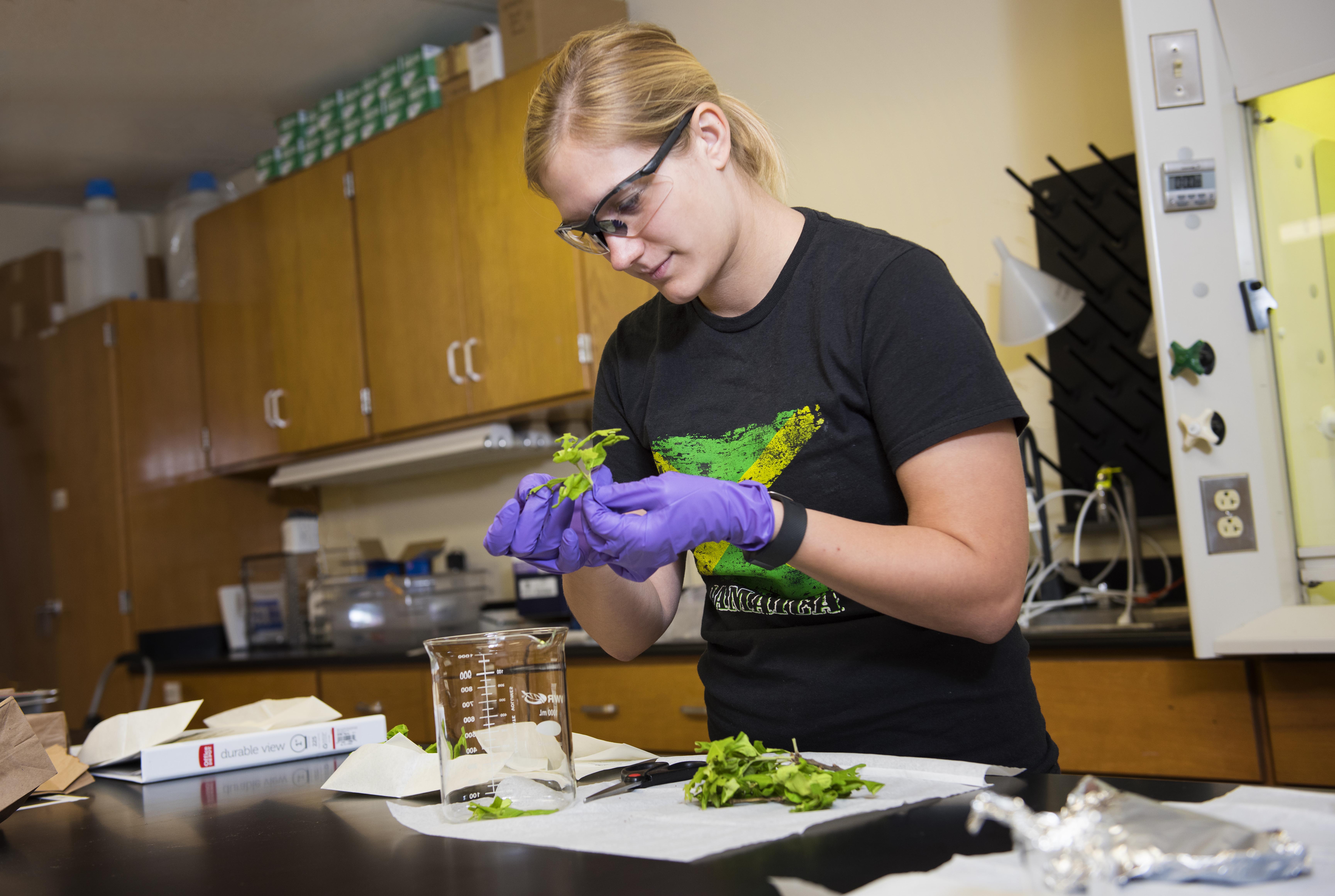
DENTON (UNT), Texas – Researchers at the University of North Texas have found that two oak tree species, widespread across the southern U.S., remove black carbon from the urban atmosphere. Their findings may offer a natural way to improve climate and air quality.
The study led by Alexandra Ponette-González, principal investigator and associate professor in the Department of Geography and the Environment, and graduate student Jenna Rindy in collaboration with colleagues at UNT, Baylor and the Cary Institute of Ecosystem Studies was conducted in the City of Denton within the Dallas-Fort Worth metropolitan area. The researchers measured the amount of black carbon particles captured by post oak and live oak trees and the amount of the black carbon transported to the ground with falling leaves.
Black carbon, commonly referred to as ‘soot’ in urban areas, is released directly into the atmosphere as a result of fossil fuel, biofuel and biomass burning, and is the second most important agent contributing to climate change. Black carbon also represents one of the most harmful components of fine particulate matter. When inhaled, black carbon can cause respiratory and cardiovascular problems.
Their results, recently published in Environmental Science & Technology, show that post oak trees capture approximately two times more black carbon than live oak trees. Their findings also indicate that post oak and live oak trees capture the most black carbon in the fall and winter, when black carbon air pollution is at its highest. In other words, trees are filtering the air when it is most beneficial to urban residents, although the two oak species filter different amounts. Post oaks (deciduous trees) drop their leaves in the fall, while live oaks (evergreen trees) keep their leaves during winter. This means that maintaining deciduous and evergreen species in urban landscapes is important to filter the air year-round.
Some of the black carbon intercepted by trees sticks to the leaves. When those leaves fall to the ground, it can become incorporated and stored in the soil. The researchers found that post oaks transport three times more black carbon to the ground than live oaks, suggesting that storage of black carbon in soils under post oak trees could be considerable. Black carbon can be stored in the soil for hundreds of years, keeping it out of the air where it can no longer affect climate or health. While in the ground black carbon can also stick to pollutants like heavy metals and prevent them from leaching into surface and groundwaters.
How much emitted black carbon could be filtered by Denton’s oaks? Using data on black carbon emissions factors, fuel consumption and tree leaf areas in the City of Denton, the team estimated that post oak and live oak trees potentially capture approximately 32 percent of the city’s yearly black carbon vehicle emissions.
The research was funded by a five-year National Science Foundation Faculty Early Career Development grant.




